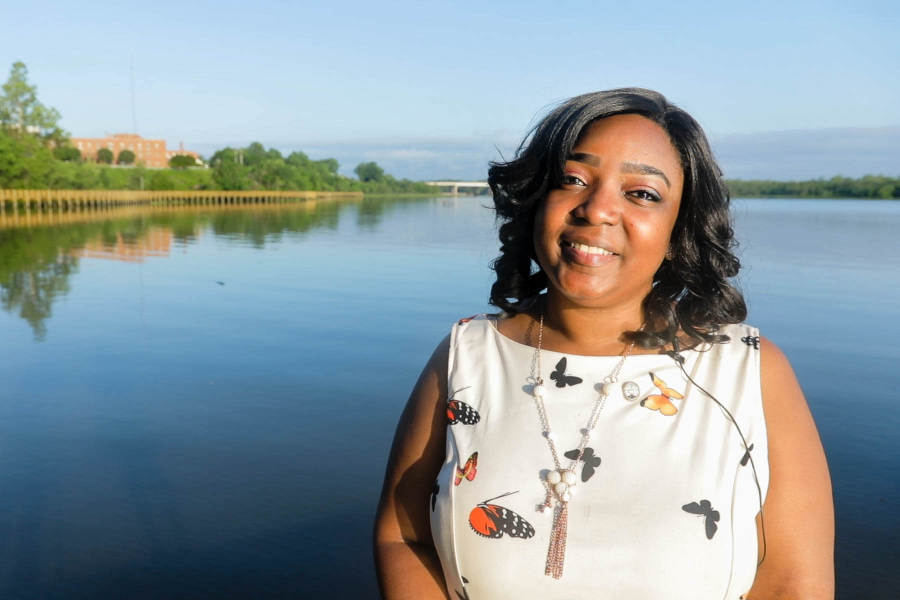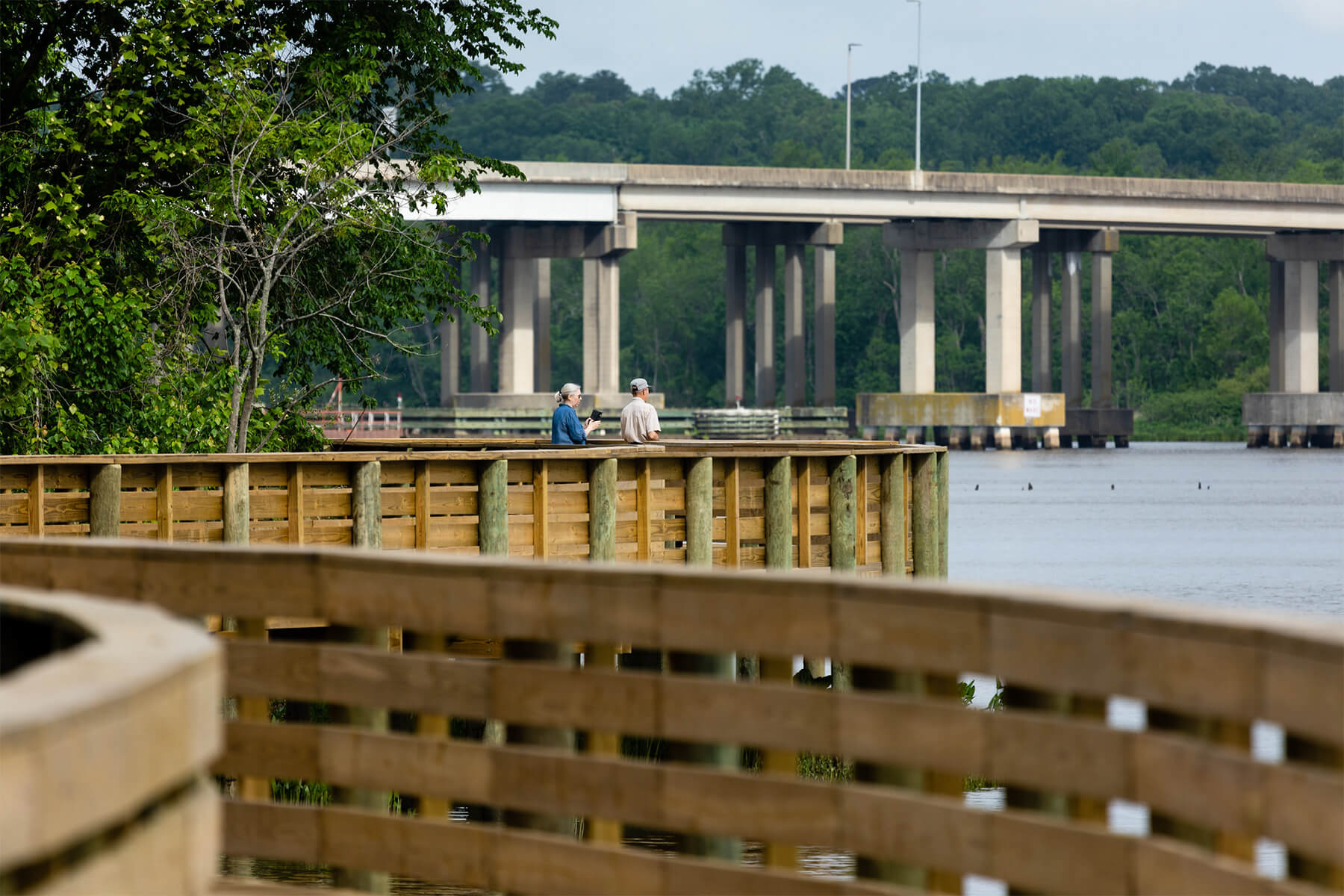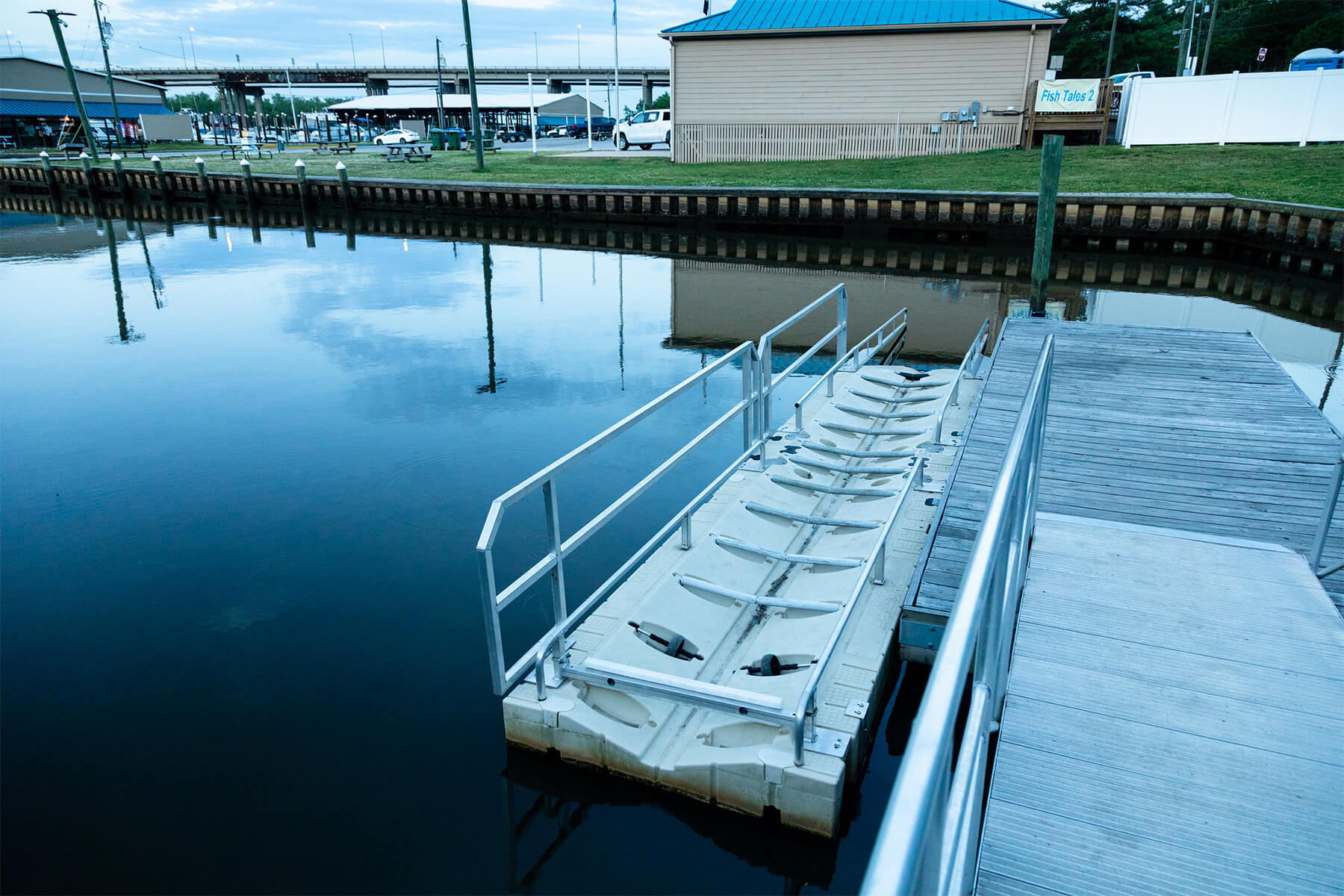Trailblazing local leader advocates for clean water in Virginia

Over the past several years, Councilmember Jasmine Gore has proven to be a strong advocate for clean water in Virginia. The stretch of the James River that runs through Hopewell—where Gore served as Mayor from 2018 to 2020—has seen significant improvement in recent years. A variety of green initiatives developed during Gore’s tenure, such as the city’s Riverside Park Greenway and a 1,700-foot, waterfront boardwalk known as the Riverwalk, have reconnected the neighborhood to its river while reducing the amount of polluted runoff into it.
She is one of the youngest members elected to Hopewell’s City Council, the first woman and African-American elected to represent Ward Four and the youngest person to be appointed Vice Mayor. Now, the inspiring local leader has been elected Chair of the Chesapeake Bay Program’s Local Government Advisory Committee (LGAC), a group that advises the Bay Program’s Executive Council on how to effectively implement projects and engage the support of local governments to achieve the goals of the Chesapeake Bay Watershed Agreement.
We sat down with Councilmember Gore to catch up on Hopewell’s green initiatives and hear her thoughts about serving on LGAC.

I’ve read that Hopewell’s stretch of the James River is healthier than it’s been in the last century. Could you tell us what has helped the community to get to this point?
In 2016, the City of Hopewell established a stormwater program that has allowed city staff to address stormwater risks, identify and complete local curb/gutter projects, implement the Federal Clean Water Act and accomplish Virginia water regulatory objectives. Through this hard work, city staff have received several grants that help maximize our limited resources so we can address local drainage issues that impact the James.
Building off this work, in 2017, Hopewell partnered with the Urban Land Institute to develop a technical assistance panel report titled, “Revitalizing the City of Hopewell Waterfront,” which included ten short-term and ten long-term strategies for better managing land use and real estate issues. To date, Hopewell has adopted a Complete Streets Policy, approved a citywide trail/bike plan, executed a public/private partnership for the development of the Hopewell City Marina, established a local waterfront park and adopted a new land use comprehensive plan which refers to itself as, “the City’s official guide in decision-making about the built and natural environment.”
The city’s main wastewater treatment facility, Hopewell Water Renewal, opened its doors in 1977. Since that time, it has gone through two significant upgrades to increase treatment capacity and reduce the amount of nutrients that it discharges into the James River. The facility currently treats about 27 million gallons of wastewater a day. It has an Environmental Management System in place to guide current and future operations, which include continuing to reduce its environmental impacts and costs, while increasing efficiency and community satisfaction. The facility was designed to handle the projected flows and loads anticipated for the region through 2040.
Lastly, the city’s stormwater team is implementing restoration projects at a number of locations, in partnership with the Chesapeake Bay Foundation. This work will address creek flooding and include the creation of several retention ponds in Mathis Park and along City Point Road. Additionally, during the pandemic, this partnership produced a number of environmental stewardship projects, including the installation of a stormwater debris net at City Park, establishment of bald cypress trees on the shoreline near the Riverwalk for erosion control and various trees plantings in targeted areas throughout the city to increase canopy, control erosion and promote biodiversity.
How have Hopewell’s recent green initiatives impacted the community?
Relative to outdoor recreation, the Riverwalk has been a tremendous success. We have witnessed Hopewell residents and individuals within the region visiting the Riverwalk and City Park on a frequent basis. What I find most comforting and exciting is the fact that the utilization after the Riverwalk unveiling has not only been steady—but increased during the COVID-19 pandemic. We were fortunate to have these resources in place during this time because it has provided mental and physical health stimulation for many.
In terms of other outdoor river recreation, the city has been able to resume its guided kayaking programs and indoor basic kayaking skills classes. These programs continue to be very popular and we are adding additional sessions for the remainder of the summer.
What's next for Hopewell? Any future projects you can discuss?
As I mentioned above, the City of Hopewell adopted a new Comprehensive Plan which serves as the visual guide for the continued development of the city looking towards the next 20 years and beyond. Chapters in the document outline a variety of goals, such as examining the near- and long-term market potential for up-scale waterfront residential properties, hotels and restaurants, as well as advocating for capital improvements that include access to the water. We also hope to introduce safer and more accessible “complete streets” in the marina area, and address health equity within the city using environmental statistics. The city is also looking forward to implementing the plans for Phase II of the Riverwalk construction and investing more resources into additional outdoor recreational access for the community.

How has your knowledge of Chesapeake Bay issues, from a local and watershed-wide point of view, changed since your involvement in LGAC?
My understanding of the Chesapeake Bay within my role as a local government leader has expanded greatly. When I first had the honor of joining the LGAC, I did not understand the significance our community played in the well-being of the Chesapeake Bay. Additionally, I was unaware of how every day behaviors impact the health of the water, as well as how environmental stewardship effects the quality of life of residents in various ways.
I also did not realize how big the “world” of Bay advocates was and how many dedicated, hard-working staff members protect what we often times take for granted. The network and efforts underway demonstrate a long-term commitment to ensure our most vital asset, water, is preserved for future generations.
As incoming LGAC Chair, what would you like to see from the advisory committee during your term or going forward?
I would love to see the LGAC play more of a leadership role in the effort to protect the Bay, by leveraging our unique perspectives and gubernatorial appointments. I believe that the LGAC and its members can serve as examples of how Bay restoration efforts influence local communities.
In our work with the Chesapeake Bay Program, we are able to carry the message from scientific experts directly to our residents, as well as other elected officials. For example, we can discuss how access to water recreation promotes fitness and improved mental health, or how waterfront investments drive economic development. We can release calls to action to prevent residents from raking leaves over drains, and tie it back to neighborhood flooding. We can address littering, access to clean water and air, infrastructure, education and so much more. We can weave together the strengths of those partnering to protect the Bay and reach our communities in every aspect.
Yes, local elected officials are “a part of the government,” and in many cases, we “are the government.” However, we are also the glue and voice for our communities. We are elected to champion our neighbors’ issues but also be their guardians to advocate on their behalf. In this role, we can help lead the way in supporting the experts in Bay preservation, while also addressing the needs of our residents, such as flooding, access to clean water, outdoor recreation and more.

Comments
Hopewell does play a significant role as two of the most historic rivers flow through it. The mighty James and it’s tributary The Appomattox River cover some 10,000 square miles on it’s banks. It has been a team effort from not only Hopewell but the other 5 localities along the Appomattox River. FOLAR (Friends of the Lower Appomattox River played a significant role in the projects noted in this article. Thanks to the former Mayor for her support but it does take a village to get things done!
Thank you!
Your comment has been received. Before it can be published, the comment will be reviewed by our team to ensure it adheres with our rules of engagement.
Back to recent stories